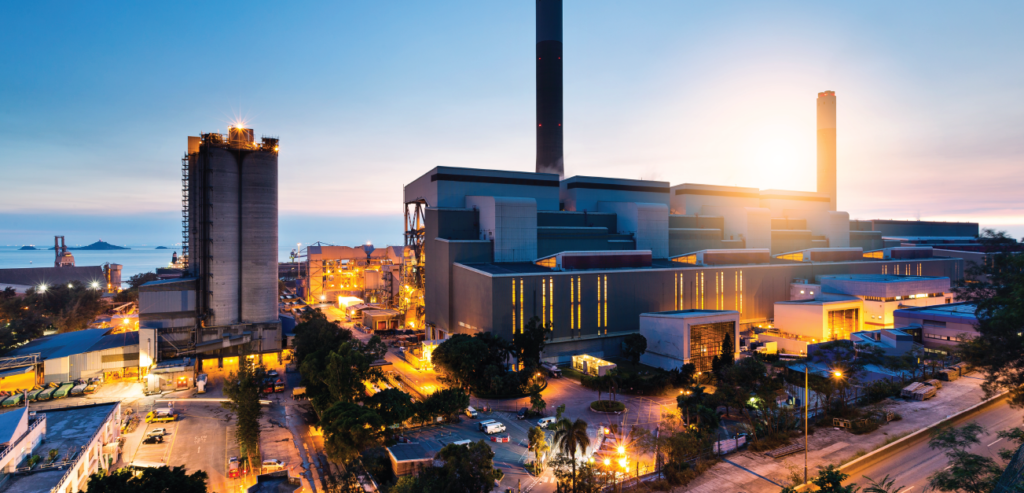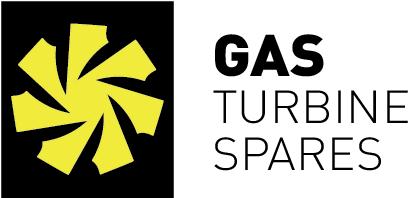
Your Guide to Gas Turbine Parts and Maximizing Returns with Gas Turbine Spares
Summary of Key Insights
The global gas turbine parts and services market, valued at approximately USD 33.9 billion in 2022 and projected to grow at an 8.7% CAGR through 2030, is driven by the shift to cleaner power generation and the need for reliable maintenance solutions. Within this landscape, consumable components—bolts, hoses, thermocouples, and more—are essential to ensuring uptime, while both OEM and high-quality aftermarket parts play complementary roles in cost management and performance.
Leading suppliers such as GE Vernova, EthosEnergy, and Turbine Services Ltd. offer core replacement parts, whereas specialized manufacturers and alternative parts suppliers deliver tailored solutions. For operators and asset owners looking to monetize decommissioned or surplus inventory, Gas Turbine Spares provides a streamlined process—free assessments, competitive pricing, and global logistics—to unlock hidden value from used, broken, or end-of-service turbines and parts.
1. Market Overview: Scale, Growth, and Drivers
1.1 Market Size and Growth Projections
The global gas turbine services market—including parts, maintenance, and MRO—is forecast to expand from USD 33.9 billion in 2022 to beyond USD 60 billion by 2030, reflecting a robust compound annual growth rate (CAGR) of 8.7%. Similarly, the broader gas turbine market (equipment plus parts) was valued at USD 23.96 billion in 2024 and is expected to reach USD 34.75 billion by 2032, driven by expanding power demand and grid flexibility needs.
1.2 Key Demand Drivers
- Decarbonization and Efficiency: The transition from coal to natural gas for lower carbon emissions has spurred investments in combined-cycle gas turbines, elevating aftermarket parts demand for high-temperature alloys and advanced coatings.
- Aging Fleet and Lifecycle Extension: Many installed turbines, particularly GE Frame and Siemens Westinghouse models, are nearing mid-life, necessitating component upgrades and consumable replacements to sustain output and reliability.
- Renewable Integration: Gas turbines provide rapid ramp-up capability to complement intermittent renewables; operators thus prioritize quick‐turnaround spares and consumables to avoid downtime.
- Supply Chain Resilience: Recent global disruptions have underscored the need for diversified sourcing of both OEM and alternative parts to secure critical inventory.
2. Anatomy of Gas Turbine Parts and Consumables
2.1 Core Components
A typical heavy-duty gas turbine comprises three primary sections—compressor, combustor, and turbine—each containing critical parts that require periodic overhaul or replacement:
- Compressor Blades & Vanes: Multi-stage axial compressors with rotating blades and stationary vanes compress inlet air. Blade failure leads to efficiency losses and must be monitored via borescope inspections.
- Combustion Chambers & Fuel Nozzles: Precise fuel‐air mixing in can-type or annular combustors relies on nozzles, liners, and transition pieces able to withstand >1,400 °C temperatures.
- Turbine Blades & Buckets: High-pressure (HP) and low-pressure (LP) turbine stages extract work; blades feature cooling passages and thermal barrier coatings to endure extreme gas paths.
- Bearings, Seals & Casings: Journal and thrust bearings, labyrinth seals, and shaft casings maintain rotor stability and prevent gas or oil leakage.
2.2 Consumables & Wear Parts
Beyond major rotating hardware, consumables encompass fasteners, sensors, and soft goods:
- Bolting & Doweling Studs, Washers, Nuts, Lock Plates ensure secure assembly and alignment under vibration.
- Flexible Hoses for fuel and lubrication routing tolerate pressure cycles and thermal movement.
- Thermocouples & RTDs provide critical temperature feedback for combustion and exhaust monitoring.
- Seals & Packing Rings prevent ingestion of contaminants and maintain efficiency over service intervals.
3. OEM vs. Aftermarket: Choosing the Right Parts
3.1 OEM Parts Advantages
Original Equipment Manufacturer (OEM) parts—from GE Vernova, Siemens Energy, and Mitsubishi Power—offer guaranteed compatibility, documented performance, and warranty support. These parts undergo rigorous testing and benefit from continuous engineering updates to improve durability and lifetime.
3.2 Aftermarket & Alternative Parts Benefits
Aftermarket suppliers—including EthosEnergy, Turbine Services Ltd., and independent specialists—provide cost-effective solutions, often matching or exceeding OEM specifications. Key advantages include:
- Cost Savings: Up to 30–40% lower pricing compared to OEM list rates, reducing maintenance budgets.
- Faster Lead Times: Localized stock and flexible manufacturing capacity can deliver parts in weeks rather than months.
- Legacy Support: For older turbine models no longer supported by OEMs, alternative parts suppliers keep fleets operational.
3.3 Quality Assurance & Certification
Respectable aftermarket vendors adhere to ASME, API, and ISO quality standards, conduct non-destructive testing (NDT), and provide full traceability of materials and processes—ensuring performance parity with OEM units.
4. Leading Turbine Parts Suppliers and Manufacturers
4.1 GE Vernova
As the original designer for many heavy-duty frames (7EA, 7FA), GE Vernova offers a comprehensive range of turbine replacement parts—blades, nozzles, rotors, and casings—backed by global service centers and long-term performance guarantees.
4.2 EthosEnergy
EthosEnergy specializes in GE® heavy-duty frame turbines, providing OEM-equivalent replacement and spare parts that meet or exceed original specifications, plus technical support to optimize overhaul cycles.
4.3 Turbine Services Ltd.
With a focus on both GE and Westinghouse designs, Turbine Services Ltd. stocks a full catalog of aftermarket replacement parts—from fasteners and packing rings to combustion components and seals—supported by engineering and MRO services.
4.4 Gas Turbine Parts & Services, Inc. (GTPS)
GTPS delivers non-OEM replacement components for GE heavy-duty turbines, including fuel nozzles, check valves, and flow dividers, blending manufacturing expertise with global logistics for rapid delivery.
4.5 MD&A Turbines
MD&A supplies high-quality parts and repair solutions for Frame 7FA, 7EA, and V-series turbines, offering refurbishments and extended-life upgrades to prolong asset utility.
5. Gas Turbine Spares: Your Partner in Monetizing Surplus Inventory
5.1 Who They Are
Gas Turbine Spares is a UAE-based specialist in acquiring used, broken, retired, and end-of-service gas turbines and parts, serving a global client base with a streamlined purchasing process.
5.2 What They Buy
They purchase surplus or aged components—including core hardware, consumables, and entire packages—for major platforms such as GE Frame (5, 6, 7, 9), LM2500/6000, Siemens Westinghouse W501F/D5, and more.
5.3 Process Overview
- Free Assessment: Submit inventory details for an expert review and competitive quote.
- Inspection & Valuation: On-site or remote evaluation to determine fair market pricing.
- Logistics Coordination: Handling export/import, packaging, and shipping worldwide.
- Payment & Closure: Fast payments and full documentation to complete the transaction.
5.4 Benefits of Partnering
- Maximize Asset Value: Convert idle, obsolete inventory into immediate revenue.
- Reduce Storage Costs: Free up warehouse space and cut inventory-holding expenses.
- Hassle-Free Transactions: Single-point coordination and transparent communication.
6. Best Practices to Maximize Returns
- Comprehensive Inventory Records: Document part numbers, serials, condition photos, and service histories to facilitate accurate valuation.
- Regular Condition Monitoring: Conduct visual and borescope inspections to update asset status and prevent unnoticed degradation.
- Market Timing: Track market demand for specific models—e.g., GE Frame 7F and LM6000 parts often command premium rates during peak maintenance seasons.
- Leverage Alternative Markets: Explore secondary markets and alternative suppliers to benchmark pricing before sale.
- Engage Early: Contact buyers like Gas Turbine Spares prior to decommissioning to plan logistics and avoid last-minute rushes.
7. Conclusion
Navigating the complex ecosystem of gas turbine parts—from core hardware to consumables—requires a clear understanding of market dynamics, quality standards, and supplier capabilities. Whether you’re sourcing new or alternative parts to maintain peak performance or looking to monetize excess, retired, or damaged inventory, informed decision-making and the right partnerships are key. Gas Turbine Spares offers a proven path to unlock hidden value, streamline transactions, and support your global operations.
Have used, broken, retired, or end-of-service gas turbines and parts taking up valuable space? Don’t let them sit idle—turn them into revenue! Contact Gas Turbine Spares today for a free assessment, competitive pricing, and hassle-free global logistics.
Partner with experts who understand the true value of your assets—reach out now and maximize your returns!
I WANT TO SELL
Do you have any spare parts for gas turbines you want to sell? Please Inquire now through our online submission form or contact us via phone, to assess the value of your as-removed parts.
